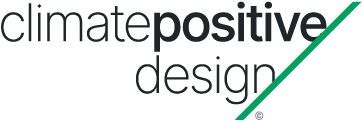For much more detail on these strategies, download our full Climate Positive Design Toolkit.







 Learn More
Learn More






 Learn More
Learn More





 Learn More
Learn More





 Learn More
Learn More












Strategies
Best Practices and Materials
Reduce Embodied Carbon Emissions
Minimize Hardscape and Structures
- Plant more, pave less
- Minimize underground construction
- Reduce concrete, steel and aluminum
Utilize Low-Carbon Materials
- Wood and wood products
- Decomposed granite, aggregate, chip seal
- Lightweight fill on structure
- Green concrete and concrete reduction
- Green steel and steel reduction
- Recycled materials
- Low carbon walls and structures
- Natural drainage swales and biotreatment areas
Reduce, Reuse, Recycle
- Reduce and recycle materials
- Minimize demolition and offhaul
- Reduce transportation and offsite emissions
Conserve and Protect Topsoil and Soil Biodiversity
- Minimize grading and till
- Minimize compaction and construction impacts
- Design strategies that minimally impact soil
- Existing soil amended in place
Increase Carbon Sequestration Through Nature-based Solutions
Protect Nature
- Do not specify sphagnum peat moss, virgin topsoil, or river gravel
Design Carbon-Smart Planting
- Maximize planting
- Minimize lawn
- Plant native species
- Select species and design planting to maximize sequestration
- Increase diversity of plant species and plant types
Certify Carbon Sinks
- Emerging carbon credit markets
Design Walking, Biking + Public Transit-Centric Communities
Compact Neighborhoods
- Compact neighborhood design
- District centers
- Residential densities
Street Networks
- Complete streets
- Shared streets
- Street width and orientation
- Bikeways
- Micromobility
- Break down barriers to walkability
Public Transit Communities
- Transit-oriented design
- Provide direct, convenient, safe pedestrian and cycle routes to transit
- Incorporate health and wellness facilities
- Remove parking minimums
Reduce Operational Emissions + Support Renewables
Design With Water
- Manage stormwater and wastewater within the landscape
- Irrigate minimally with passive, gravity irrigation
Manage Site to Reduce Carbon Emissions and Increase Sequestration
- Minimize high-maintenance lawn
- Specify electric and hand-powered equipment
- Design low-maintenance landscapes
- Minimize pruning and retain woody material
- Compost on-site
- Integrated pest management (IPM)
- Build soil carbon
Reduce Building and Infrastructure Energy Usage
- Green roofs
- Cool roofs
- High-albedo materials
- Shade buildings with trees
- Constructed wastewater wetlands
- Energy-efficient lighting
- Reduce pumping and motor usage
- Reduce Mechanical Electrical and Plumbing (MEP) energy usage
Support Renewables
- Design and plan for renewable energy deployment
- Plan for development- and neighborhood-scale renewable infrastructure
Reduce the Carbon Footprint of your Business Operations
Measure
- Calculate your organization’s emissions by preparing a greenhouse gas (GHG) inventory
Reduce
- Reduce the GHG emissions of your organization
Offset
- Use carbon offsets only when primary emissions cannot be reduced
Publish
- Certify and disclose your organization’s GHG emissions annually
Climate Resilience
For much more detail on these strategies, download our full Climate Positive Design Toolkit.
Strategies
Best Practices
Expand Ecological Services
Incorporate Nature-based Solutions
- Coastal adaptation
- Water-resilient cities
- Re/afforestation of steep slopes
- Support cool, green public infrastructure
Cultural Burning
- Learn from and work with Indigenous communities to incorporate traditional burning into land management practices
Protect, Conserve + Enhance Biodiversity
Protect Existing Ecosystems
- Forests
- Peat bogs, coastal wetlands, mangroves, reed beds, marine kelp and seagrasses
- Grasslands
- Avoid incremental habitat loss
- Avoid plastic
Restore Disturbed Landscapes
- Rewilding
- Afforestation
- Bodies of water
- Seaforestation
Support Habitat
- Interconnected ecosystems: Avoid fragmentation and ecological islands
- Wildlife and habitat corridors
- Construct diversified ecosystems, and provide food, shelter and nesting places for fauna
- Design planting for succession, not replacement
- Minimize light and noise pollution
- Offset habitat loss as a last resort
Use Endemic, Native, or Long-term Adapted Species to Enhance Biodiversity and Climate Migration
- Consider long-term climatic shifts when selecting species
- Seed collection and propagation
Specify Manufactured Soils that Mimic Endemic Soils
- Design planting for endemic soils
Incorporate Ecologically Sound Land Management Practices
Manage the Wild-Urban Interface to Maintain Ecosystem Functions, Biodiversity and Climate Resilience
- Development patterns that protect wildlands and reduce risk from wildfire, landslides, and flooding
- Wildfires
- Prevent landslides
- Manage invasives
- Include risk and emergency management in community planning
- Support self-reliant ecosystems
- Urban infill
- Urban retrofit
Mitigate Heat Islands
- Create urban forest canopies
- Design parks to cool communities
Prioritize Health and Well-Being
- Include passive and active spaces for all demographics
Support Regenerative Local Agriculture and Increase Food Security
Protect and Restore Agricultural Areas
- Peri-urban agriculture protection
- Abandoned farmland restoration
- Farmland planning
- Agrivoltaics and wind power
Support Local Food Supplies
- Urban food forests
- Microgardens
- Rooftop agriculture
- Aquaculture
- Rainwater harvesting
- Improved irrigation infrastructure
- Community food hubs and farmers markets
- Indigenous foodways
- Regional foodways
- Land ownership and access
Encourage Alternative Farming Techniques
- Regenerative agriculture
- Conservation agriculture
- Agroforestry
- Silvopasture
- Windbreaks
- Riparian forest buffers
- Forest farming
- Alley cropping / tree intercropping
- Municipal and regional composting
- Staple foods
- Managed grazing
Equity
For much more detail on these strategies, download our full Climate Positive Design Toolkit.
Strategies
Best Practices
Advocate for Equity + Social Well-Being
Build Community
- Recognize past injustices
- Know yourself
- Start by listening, then share
- Focus on what matters most
Understand Climate Injustices
- Unearth community knowledge
- Identify issues
- Go to the people
Get the Word Out
Use Communication Tools and Techniques
- Develop a plan for community collaboration
- Gather data
- Support community involvement through analytical tools
- Organize and synthesize
- Implement and evaluate
Explore Pathways to Financial Stability with Communities
Development-driven
- Tax-Increment Financing
- Impact fees
Fees, Assessments, and Taxes
- Business / City / Special / Local Improvement Districts
- Taxing energy use
International and Domestic Public and Private Funds
- International institutions
- Innovative financing
Foundations
- Private and institutional funding
Learn from Cultural Knowledge Systems and Practices of Care
Learn from Indigenous Communities through Collaboration
- Enrich discovery
- Inspire a new future
- Develop long-term collaborative, meaningful relationships
- Listen first
- Recognize, respect and identify
Show Respect through Land Acknowledgments
- Start with humility and self-reflection
- Understand and acknowledge
- Show respect
Plan and Design Project Work with Indigenous Peoples
- Co-plan and co-design
- Adopt Indigenous science
- Follow guidance: Refer to the International Indigenous Design Charter
- Sustainable future engagement opportunities
Advocacy
For much more detail on these strategies, download our full Climate Positive Design Toolkit.
Strategies
Best Practices
Support Climate Leadership
Engage the Public
- Engage the media
- Get out there
Work with Elected Officials and Public Servants
- Who to reach
- Craft your message
- Share case studies
- Invite others
- End with an ask
- Follow up
- Hire a lobbyist to advance climate policies
Guide Policies
- Nature-based systems
- Community planning and design
- Underserved communities
- Transportation
- Agriculture
- Greenhouse gas emissions
Build Climate Coalitions
Identify and Reach Out To Key Collaborators
Determine Targeted Items for Collaboration
Build Local Climate Coalitions
Organize Roundtable Discussions
Nurture Future Climate Leaders
Support Employee Health and Well-Being
- Evaluate
- Support health and well-being
Encourage Employee Involvement in Climate Action
- Start where you are, use what you have, do what you can
Promote Global Alliances
Embody the United Nations Sustainable Development Goals (UN SDGs) and Convention on Biological Diversity Global Biodiversity Framework
- Embed the UN SDGs and Global Biodiversity Framework into business plans and daily actions
Go Global
- Expand international and interdisciplinary relationships
Acknowledgments & Sources
We are grateful to the following publications, research and individuals for their contributions to the ideas of the Climate Positive Design Toolkit. See our Resources page for additional sources and resources.
American Society of Landscape Architects: Climate Action Field Guide
Australian Institute of Landscape Architects: Climate Positive Design Guidelines
Architecture 2030: 2030 Palette and Carbon Smart Materials Palette
Carbon Conscience, Chris Hardy and Sasaki: White Paper, Design Guidelines
Steve Engler, PE, LEED AP, Senior Associate at Sasaki
Deanna Lynn, Landscape Design for Carbon Sequestration
Amy Whitesides, Design Critic, Landscape Architecture, Harvard University Graduate School of Design
Nicholas Pevzner, Yekang Ko, and Kirk Dimond, Power Player: Designing for Just and Multifunctional Energy Landscapes, Landscape Architecture Magazine, 6/8/2021
Project Regeneration: Regeneration.org
United Nations: Sustainable Development Goals
UN Convention on Biological Diversity: Kunming-Montreal Global Biodiversity Framework



